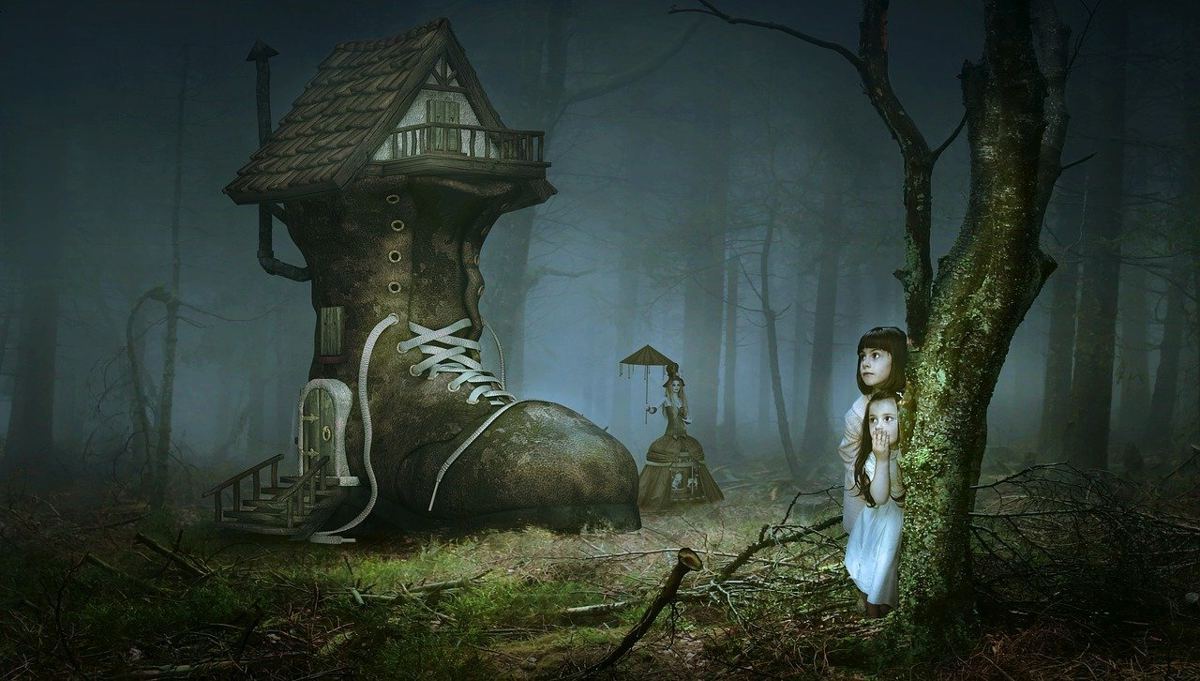The Dark Secrets Behind Fairy Tales You Never Knew

Fairy tales often bring to mind images of magical lands, brave heroes, and happy endings. But have you ever wondered about the dark secrets behind fairy tales? Many of these stories, passed down through generations, have origins far more sinister than their modern versions suggest. For example, the original "Little Red Riding Hood" didn't end with a rescue but with a gruesome twist. Similarly, "Cinderella" had stepsisters who went to extreme lengths to fit into the glass slipper. These tales were not just bedtime stories but cautionary lessons filled with grim details. Let's dive into the eerie truths hidden within these beloved stories.
The Grimm Reality of Fairy Tales
Fairy tales often bring to mind images of magical kingdoms, brave heroes, and happy endings. However, many of these stories have dark origins and hidden meanings that are far from the cheerful versions we know today. Let's uncover some of the most surprising secrets behind these beloved tales.
The True Story of Cinderella
The tale of Cinderella is one of the most famous fairy tales, but its original version is much darker than the one popularized by Disney.
Gruesome Stepsisters: In the original story by the Brothers Grimm, Cinderella's stepsisters go to extreme lengths to fit into the glass slipper. They cut off parts of their feet, only to be found out when their blood gives them away.
Revenge of the Birds: At the end of the Grimm version, birds peck out the eyes of the wicked stepsisters as punishment for their cruelty.
Little Red Riding Hood's Dark Path
Little Red Riding Hood seems like a simple story about a girl and a wolf, but its origins are much more sinister.
Cannibalistic Wolf: In early versions of the tale, the wolf tricks Little Red Riding Hood into eating her own grandmother before attempting to eat her as well.
No Happy Ending: Unlike the modern version where a woodsman saves the day, older versions often end with the wolf devouring Little Red Riding Hood with no rescue in sight.
The Disturbing Origins of Sleeping Beauty
Sleeping Beauty is another fairy tale that has been significantly sanitized over the years.
A Darker Awakening: In Giambattista Basile's version, "Sun, Moon, and Talia," Sleeping Beauty is not awakened by a kiss but by giving birth to twins after being assaulted in her sleep by a king.
Jealous Queen: The king's wife, jealous of Sleeping Beauty, tries to kill her and the twins, but her plan is thwarted, and she meets a gruesome end.
The Real Hansel and Gretel
Hansel and Gretel is a story of two siblings who outsmart a wicked witch, but its origins are rooted in darker themes.
Famine and Abandonment: The story likely originated during times of famine when parents would abandon their children because they couldn't feed them.
Cannibalism: The witch's desire to eat Hansel and Gretel reflects the grim reality of cannibalism that occurred during extreme famines.
The Beastly Truth Behind Beauty and the Beast
Beauty and the Beast is often seen as a tale of love and redemption, but its origins reveal a more unsettling story.
Stockholm Syndrome: Some interpretations suggest that Beauty's growing affection for the Beast is a classic case of Stockholm Syndrome, where a captive begins to sympathize with their captor.
Beastly Behavior: In older versions, the Beast's transformation is not always a reward for Beauty's love but a punishment for his own misdeeds.
The Chilling Tale of The Little Mermaid
The Little Mermaid is a story of love and sacrifice, but Hans Christian Andersen's original version is far more tragic.
Painful Transformation: In the original tale, the mermaid's transformation into a human is excruciatingly painful, as if walking on sharp knives.
Heartbreaking End: Instead of marrying the prince, the little mermaid is heartbroken when he marries another. She ultimately dissolves into sea foam, a symbol of her unfulfilled love and sacrifice.
The Hidden Truths of Fairy Tales
Fairy tales often hide dark secrets beneath their enchanting stories. Many classic tales have origins rooted in grim realities, reflecting societal fears and moral lessons. For example, Cinderella originally had stepsisters mutilating their feet to fit the glass slipper. Little Red Riding Hood warned children about the dangers of strangers, with much more gruesome endings in early versions. These stories evolved over time, becoming more child-friendly but losing some of their original messages. Understanding these darker aspects gives us a deeper appreciation of the tales we grew up with. They remind us that behind every magical story, there’s often a lesson about human nature and society. Next time you read a fairy tale, remember its hidden depths and the truths it once aimed to convey.

